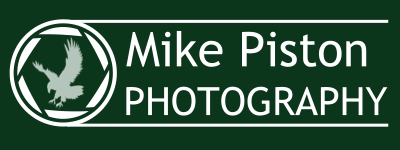In the last month, I have received several questions about how I process my bird pictures. I’ll explain my process here, and you may find it helpful to try some of the tools and techniques I use. The time I spend processing my bird pictures is almost as enjoyable as when I take them in the field! Sometimes, if only because I can’t identify the bird I’ve taken a picture of until I get home and see it on the computer
Before we get into the tools and techniques, you must start with the sharpest and most well-exposed images possible. You can do much with today’s photo editing software, and AI capabilities add even more tools to improve pictures. However, the better your original image, the better your results.
1. Choose the best images from your memory card.
I use a Macbook Pro, and when I get home, I put the SD card from my camera into the computer’s memory card slot to select the images I want to process. I’ll use the finder and open the SD card in Gallery Mode to see the pictures easily. Then I open another finder window and create a folder named after the day and location of the photoshoot. I’ll review the images via the finder and copy the best pictures into the folder with the date and location. Once I finish this step, I’ll eject the SD card from my Mac and double-check to ensure it’s been ejected before removing the memory card.
2. Sort and tag the images.
I use Adobe Lightroom Classic to process my bird pictures because it is (in my opinion) the best tool for managing picture files. The subscription-based model might be a turn-off for many folks, and if that’s the case for you, I’d suggest you look at ACDSee Photo Studio as an alternative to Lightroom. Using Lightroom, I’ll sort the pictures and add tags to the ones I like. The tags include the type of bird (Northern Cardinal), the bird’s gender, and where the bird was when the picture was taken. For example, Northern Cardinal > Female > on a branch. Or, Pileated Woodpecker > Male > on a tree trunk. You can add many tags to each picture, but trying to add too many gets to a point of diminishing returns.
3. Begin the initial processing steps.
I’ll either continue the processing tasks with Lightroom or use Topaz Photo AI to enhance the sharpness and reduce noise. I like Lightroom’s sharpening and noise reduction features, but Topaz Photo AI has better sharpening and noise reduction capabilities than Lightroom, which provides more natural results, especially on marginal pictures. I work to accomplish two things with Topaz Photo AI. First, I use the subject-sharpening feature to focus the image better. Like any picture-sharpening tool, you can add too much sharpening and end up with poor results. Because of this, I often try several of the Topaz Photo AI sharpening models to get the best results. Next, I want to reduce any noise in the pictures. Even well-exposed pictures can have some noise in them, especially when the ISO of the exposure is high. I’ll use Lightroom or Topaz Photo AI to reduce the noise in the picture. I experiment with Lightroom and Topaz to achieve the best noise reduction.
4. Adjust the pictures’ exposure, contrast, color, etc.
While Topaz Photo AI has exposure and color correction capabilities, they are still a work in progress. I use Lightroom for these adjustments because it gives you better correction control. If you aren’t a fan of the subscription model, then ACDSee, as mentioned above, might work for you. I’d also check out Affinity Photo, which has many features at a reasonable one-time price. I am putting together a tutorial on processing bird pictures using Lightroom, including the basic lighting adjustments, color temperature, presets, and gradients. I’m a ways from being a Lightroom “Pro,” but the techniques I’ve learned through trial and error might be helpful as you move through your bird photography journey.
5. Back up everything!
After you’re done working through the steps above, and even while you’re progressing through these steps, please keep everything backed up. If you are a photographer, losing your images is a nightmare scenario! As an essential backup, I use Time Machine on my Mac. But that is just for starters. I use Backblaze to back up my files in the cloud. I also have a Network Attached Storage (NAS) device that continually backs up my photo files via my home network. Finally, I synch various physical SSD drives with my photo directories.
These are my high-level bird photography processing steps at a high level. As mentioned, I’m also working on a tutorial for processing bird pictures in Lightroom and Topaz Photo AI. Send me your details in my contact form, and I’ll email you when it’s ready. Please let me know if you have any questions about the steps above!
Here are the applications I use in my bird photography processing:
Adobe Lightroom Classic
Affinity Photo
ACDSee Photo Studio
Topaz Photo AI
Backblaze
Synology Drive Client


